#but luckily this is just some random blog post and not an assessment so the only cost here is your patience
Text
Ten Very Specific Happiness-Inducing Things
(For the past four-and-a-half months I have been trying to write this list, only to be foiled by failing to save this as a draft in combination with repeated mass extinction events of my own technological creation. Sincere apologies to my computer, whose labor rights I have surely violated in every possible way. I promise I will shut you down on purpose some day instead of letting your battery run out from neglect, and will make a better effort not to accrue hundreds of new tabs in under a week ignoring, of course, that I opened over twenty new tabs in the making of this post.)
ANYWAYS, thank you to @theoldaquarian for tagging me, and apologies for taking so long! But know that even though it’s taken a long time to actually make this list, even just keeping it in the back of my mind and being reminded of it every now and then has been a nice bit of brightness these past few months :D
And now, three paragraphs later whoops here is the actual list, in no particular order, which will inevitably be much longer than necessary:
1. When something silly happens to you in public and it makes a handful of strangers laugh/smile
(The thing that specifically comes to mind here is the time this particularly vicious seagull stole a chocolate croissant right out of my hand. It was a tiring morning. and I was on my way back from from what I believe was our neonates exam, and I’d literally just stepped outside Tesco, two bites and half a euro into my croissant as a reward to myself for making it through the harrowing experience, when this UTTER BASTARD swoops underneath my elbow to steal this half-eaten croissant from my closed fist. AND IT WORKED. But I couldn’t even be mad about it, it was just one of those John Mulaney days and it WAS pretty dang funny, so I just yelled that it owed me fifty cents and went on with my walk)
2. The color blue
(This need not be explained)
3. Successfully quoting a whole scene or episode from memory that you haven’t read or watched in years
(Will ANYTHING compare to reciting the entire band geeks Spongebob episode on the way back from marching band rehearsal with a bunch of people from different sections chiming in whom you may not even know?? Remains to be seen)
4. People making music out of unconventional sounds
(BIGGEST shoutout to @silent--sonata for showing me the power of microwave bleeps and keyboard clacks)
(And also anyone else who’s ever heard fire alarms, car alarms, creaky old pipes, or weird hose noises and decided the next best thing to do is to break out your instrument(s) and improvise some cool jams)
(And can’t forget office supplies)
5. Showing someone the recorder cover of the Titanic song for the very first time
(I think I nearly killed my friend that time, 10/10 would recommend)
6. Finding a stairwell with the perfect kind of echo to yell/sing/whistle/Play Some Kind of Music in
7. When you’re running/walking/Doing A Task exactly to the beat of the music you’re listening to
(Shoutout to Toby Fox for writing Spear of Justice at the exact tempo required for me to book it to the six o’clock bus less than fifteen minutes after waking up)
8. Dancing and singing horribly to really cheesy Bollywood music on a rooftop in the middle of a monsoon
(Bonus points for lugging up one of those old fashioned antennae radio and sticking an umbrella over it)
(Doesn’t even have to be Bollywood music tbh, any music you can’t sing well — ESPECIALLY instrumental music)
9. Scrambling across the city with a bunch of strangers in someone’s car whom you’ve never met before for the sole purpose of catching a legendary Pokémon
(There’s nothing quite like wandering around in front of some tiny dilapidated church until a nondescript black car pulls up beside you and rolls down the window to allow the passenger to stick their head out the window and go: “[REDACTED]? Get in” and then speed away because the timer for the nearest Entei’s running out. It almost felt like an action movie lol)
10. When the wind tussles your hair in just the way that makes you feel like a Ghibli movie protagonist
(To which I quote: IN THE SPIRIT OF OWNING ONE’S CRINGE)
Thanks again for tagging me! This was a delightful thing to brainstorm and good reminder of the little positive things that keep us going day to day, despite whatever else is going on. Anyways, absolutely NO pressure to make a list (I know this is likely a repetition or something very out-of-the-blue to most of you), but because I am greedy and would love to see my dash filled with whatever oddly specific things that make y’all happy: @pachelbelsheadcanon, @averybritishbumblebee, @internetkatze, @mehrto, @yeswevegotavideo, @beingjanee, @drivingsideways, @rogueofdragons, @ifeelbetterer, @queenerdloser, and GENUINELY anyone else who wants to share their tiny happinesses. The more the merrier!
(EDIT: The formatting is being very annoying and won’t indent, so I went and bolded the different numbers instead. Sorry if it’s difficult to read!)
#will I EVER get to the point in under four sentences??? EXPERTS REMAIN SKEPTICAL#anyways apologies for the excessive rambling#and the possible over-familiarity (which again — feel free to ignore this)#I cannot differentiate between relevant and irrelevant information#to a degree that has actually been affecting my grades lol#or tell a coherent story (which BAD NEWS with a writing deadline in under a week)#but luckily this is just some random blog post and not an assessment so the only cost here is your patience#which again: SORRY THIS IS SO LONG I DON'T KNOW HOW THIS KEEPS HAPPENING#captain's log#tag thingy#tag game#ask meme#as I was making this list I realized there are actually many more things that I had to cut to narrow it down to ten#which was kind of surprising tbh considering how much trouble I've had thinking of Ten Whole Things the past few months#happy progress!!#also I realize like half of these are music-related#what can I say music is special like that#but there are also plenty of non-music related things that are very happiness-inducing#like making babies laugh#or finding untouched frost or snow in the morning#running into the same stranger(s) at a very early or very late bus stop and becoming familiar enough to nod at each other#surprising someone with an old kind of candy you haven't had since childhood#and watching that unfettered joy spread across their face as easily as it did when you were children#before happiness became something to guard against for fear of losing it#because it's so surprising and so simple that you just CAN'T brace yourself against it#ANYWAYS PEOPLE ARE GOOD ACTUALLY AND I LOVE US#man what a change from Tuesday night's mood#time to go reblog a bunch of people-are-people posts#never mind I lost the past couple hours on that unexpected music subreddit#turned back at the death metal rooster and remembered I never actually hit post
7 notes
·
View notes
Text
Evaluation
Media and Techniques
For this FMP, I was provided with a lot of media to work with. Typical media such as pencils and paper were used (mainly for sketching and coming up with concepts) but also unique physical techniques such as drypoint lino printing and monoprinting were explored, as well as collaging. In the digital realm, I used many Photoshop techniques such as double exposure, poster design, and typography.
Examples of these experiments include the digital experiments with the robot imagery using double exposure, turned into a poster with typography, and other experiments with these elements were used as well. In physical media, I created experimentation ripping pages with head features and collaging them, and also creating monoprint renditions of toys.

In addition to giving me time to come up with what my outcomes would end up being, this experimentation helped give me practice with various Photoshop effects I would use later. I would use colour blending and hue switching effects as well as erasing/blending layers together in the experiments and later in my outcomes as well. In terms of my research, I looked a lot into typography and composition through the artists Severino Canepa, Barbican, and Rosalie Gascoigne, who I think all helped with design elements in my project. Though looking back, it was the research into Cozmo and Wall-E’s character designs that helped the most with my project, fundamentally. Later research went into branding styles and packaging design, which were very important later into the outcomes.
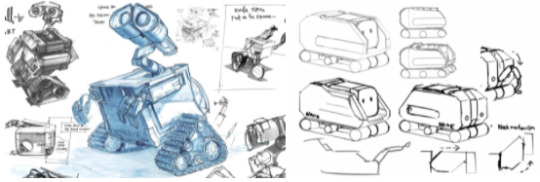
My research helped because I was able to understand how to go about designing a robot like this and I had many inspirations to work with. For example, looking at Optimus Prime helped me to conceptualise the transformation options on my own design. The direct research into the things I looked at for my project were deep and beneficial to what I did as the design sheets were practically instructions for me to create my outcomes, by comparison my miscellaneous artist research was relatively shallow. I feel as though my proposal was met with the amount of research I did, and its content.
Purpose / Theme / Context
My project’s purpose/theme/concept was a light-hearted physical toy for entertainment, targeted at children and young adults. I did not go too deep with the overall “meaning” of my project beyond making a cool, nifty little thing that would attract attention from its target audience and be functional, playable, and appealing. I thought about reaching my target audience a lot, and in the end employed technological compatibility such as using wireless control with mobile devices (though stating that this is “easy to use”/set up), and more important using bright colours and flashy imagery. I also kept the toy design straightforward rather than overly complex, to make its functionality appear as simply as it can, and for it to be used by anyone.

With my concept, I hadn’t really sat down and spent a lot of time contemplating it. I had just thought that it would be a cool and interesting idea to me to make a robot toy design and I worked from there. I alternatively considered things about trains or about video games, and it likely would have ended up either way at something geared towards younger people or purely made for entertainment. The journey of my project largely involved something vaguely in my mind to do with robotics, and that I could perhaps design some form of robot toy, before getting a more concrete idea. For a long while, I did experimentation with some kind of fear for confronting what my outcomes would actually be, and did not know fully what I was doing, until I eventually overcame this by talking to my teachers about my vague concepts to land on how to turn them into full, actual plans. I was suggested to make packaging design and concept art, along with branding guidelines for the toy company, which is exactly what I did. Once I had set my sights on what to do, I got going with little problems or obstruction - but it was the initial hurdle of not knowing what I was doing for a long time that really held me back, so I was very happy to get over this.
In terms of the project itself, I frequently found myself indecisive about what design or logo to go for, and in these situations I simply asked for peer/teacher feedback until I reached a consensus I was happy with. It is interesting to me that most of the problems I had were social/mental rather than physical or artistic. Another “problem” is that my outcomes had to be made within a short timespan, but I luckily managed to get everything I had planned done quickly.
If I had had more time, I could have developed the project further with what one of my initial ideas was - Actually creating a 3D model of the toy (either digitally or physically) and photographing it for use on a more realistic box. The model itself would be an outcome, too. I had known around the time I was creating the outcomes that it would not be realistic for me to do this as part of my project as well, so I did not start.
Outcome
For my final outcomes, I created a back and a front of a packaging design box mockup for my robot toy, a robot design sheet explaining its functions and abilities, and a branding guidelines sheet for the toy company that manufactures it.

I used a Google site to present my final outcomes, as well as an individual blog post to collate them all. As can be seen, the “main” top two outcomes are mock-ups I found on a mock-up site, which were not initially the mockups I was planning to use. I had a mock-up with a transparent section of the box, but as it had made it difficult to make an effective front for the box, and I did not have a model I could convincingly show inside the box, I decided against it, favouring a simple, flat cuboid box instead.
Before I had a cohesive notion of what I would be making for my outcomes, I had only imagined designing the concept art and maybe making a model instead of the packaging. But following discussion with tutors I had planned to do packaging, concept art, and branding guidelines - all of which I did in the time allocated for outcomes. Though, as discussed in the previous section, I had it in mind to create a 3D model of the toy but decided that it just would not be realistic to be able to make it along with everything else on my plate in the time frame that I had, so I had decided against it.
Evaluation Methodology
In my project, I used various evaluation methods throughout. I would regularly look back on what I have made and state my feelings about it, evaluating and reflecting as I went, but on one occasion I talked to teachers about my project and garnered feedback about my ideas at the time for where the rest of my project would go. After listening back to what was said, I briefly wrote it up in a paragraph or two and posted it to my blog. During creative processes such as development and especially outcomes, I would ask for frequent peer feedback where I did not know what to do or had a tough choice to make between designs.
This impacted my creative process by allowing me to see a “consensus” on, for example, which Ametti logo to pick between. In the end, when I had asked for feedback for picking between two Ametti logos, I took what was liked about both of them and combined them, creating a superior logo, before making sure that it did indeed look good to my peers as well. By the time the interim assessment had happened, I was largely on top of my project, and did not have that much important feedback from it other than that I needed to finish certain blog posts etc, which I eventually did.
I have briefly touched on the planning process for the FMP and creative process and what problems I had to overcome during the beginning and middle stages of the project. I planned to do the project with both the proposal checklist (which I think I followed surprisingly well, all things considered), and by posting everything I needed to do on my blog so that I would have a constant reminder for it every time I went to look things up. I had many problems to solve such as making shortcuts with time constraints, for example where I had only roughly made 3D illustrations of the robot in Photoshop, I suddenly found myself needing to clean them up and convert them into outlines. I solved this problem by using initiative to up the contrast to extreme levels for a stark black/white contrast, and I then looked up how to select all of the black areas. This problem solving was a combination of my own initiative and looking to online sources for a solution.

Looking back, my project had strengths: it pleasantly faded out of random experimentation and into the focussed outcome at a decent point, the outcome designs looked uniform and cohesive, and I am generally very pleased with the results and the project in general - even if with a loose start, I think it held together well. I think all that I am not pleased with in the project that I see as weaknesses are the bits that I did not do: such as the areas where I could have linked back to the earlier experimentation to tie the whole project together a bit more. But, most importantly, I learnt the new physical processes I mentioned that we had done, and I learnt new things about designing in Photoshop, colour theory, blending effects and I have experience making digital illustrations now, as well.
0 notes
Text
Improve your site structure in 4 simple steps




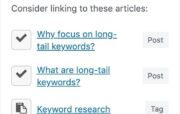
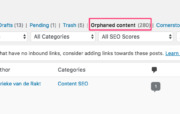
Marieke van de Rakt
Marieke van de Rakt is the founder of Yoast SEO Company Academy and CEO of Yoast. Her favorite SEO Company topics are SEO Company copywriting and site structure.

Optimizing your site structure should be an important aspect of your SEO Company strategy. A good site structure is of crucial importance for your SEO Company, as it makes it easier for both your users and Google to navigate your site. But how do you improve a site’s structure? Where do you start and how do you keep an eye on the structure of your site if it’s growing? In this post, I’ll teach you to improve your site’s structure in 4 simple steps.
Why improve your site structure?
Google follows links. And these links are also part of a great site structure. If a URL gets many links (whether it’s internal or external links), it must be an important page and search engines might rank it higher. But you shouldn’t just place links for Google. Readers also love sites that are easy to navigate and show suggested readings that make sense. That’s why it’s time to invest a bit in your site structure!
Step 1: Update and improve your cornerstones
Your cornerstone content consists of the most important articles on your site. The ones you want people to read; the ones you want to rank with in Google. They should be the most complete and well-written articles on your website. In this first step, you should take a closer look at them. Are they really of outstanding quality? Informative and easy to read? If not, start improving them!
If you use Yoast SEO Company, you should check the box in the Yoast SEO Company sidebar for all your cornerstone content articles:

Mark your most important content as cornerstone content in the Yoast SEO Company sidebar
Once you’ve checked that box, the content on this page will be assessed more strictly by our readability analysis. You may wonder why we’re so fussy about cornerstone content. The answer to that question is this: for cornerstone articles you should raise the bar because they’re very important! They should be better than your other articles and, therefore, demand more of your writing skills. Our cornerstone analysis will help you to raise your standards (and stick to them). It will be harder to score that green bullet. You have to do all the important things right!
Read more: How to use Yoast SEO for your cornerstone content strategy »
Step 2: Link to those cornerstones!
The second step to improving your site’s structure is to ensure that blog posts about a certain topic all link to your most important article about that topic. Checking this might be a lot of work, but fortunately, Yoast SEO Company is here to help!
In Yoast SEO Company, you can use the text link counter to see whether your cornerstones have enough links. In your post overview, you can select your cornerstone articles:

The text link counter in the post overview instantly makes clear which posts need more internal links.
In our example, the Ultimate guide to small business SEO has fewer internal links to it (9, to be exact) than our other two ultimate guides (16 and 31), so we should look into that. It’s easy to lose sight of your internal link distribution, but this tool allows you to steadily work through your cornerstone posts. Use your internal search function and search for the keyword of your cornerstone article. The posts that come up in this search query should be linking to your cornerstones. So, check if that’s the case and add links if they’re not there yet!
Even easier internal linking with Yoast’s internal linking tool
Looking up relevant posts manually probably sounds like a bit of a hassle. Luckily, Yoast SEO Premium makes it even easier with its internal linking feature! It works in two ways. Of course, first and foremost, it reminds you to link to your cornerstones as you’re writing new content. But you can also open cornerstone articles with few links and look at the suggestions of the Yoast internal linking feature. The articles our internal linking tool suggests are great posts to add links to your cornerstones. You should go through these articles one by one and add these links to your cornerstone post for a relevant passage, with a good anchor text.
Do these articles relevant to your cornerstone post also link to it? Time to check and add links!
Step 3: Add links to (good) orphaned articles
Once you’ve improved your cornerstone articles and made sure you’ve added links from all related posts to those cornerstones, it’s time to make sure that there is no orphaned content on your site. Orphaned articles are posts or pages that don’t get any internal links. They are hard to find on your site, for both your audience and Google. To easily identify orphaned articles, Yoast SEO Premium has the orphaned content filter, which instantly shows you all posts without internal links to them. Alternatively, you can use our text link counter to see which posts have no internal links to them.

The orphaned content filter shows you all posts that need some internal links.
Open these posts and check if they’re still up to date and useful. If you use Yoast SEO Premium, just check the suggestions of the internal linking tool. Using the tool, you can make a list of posts that should be linking to your orphaned posts. After that, you can open those similar posts and add links to your orphaned posts. You can also use the search function to find relevant posts to link to your orphaned article.
Step 4: Avoid those dead ends!
Every post should have suggestions for further reading. After all, you want people to stay on your website. But don’t just go adding random links to every post: suggestions should always be on topic. People reading about ballet shoes are probably interested in ballet shoes. So, offer them more reading material on ballet or on ballet shoes, but don’t bore them with posts about karate.
Open your post overview and sort your posts by the number of internal links in the post, using our text link counter.
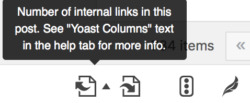
Open the posts with fewest internal links. Add links to similar posts using our internal linking tool, in the same way as described above. It’s easy and will increase the time people spend on your site considerably.
If you want to easily add related links to hierarchical pages, you can use Yoast SEO Company Premium’s sub-pages or siblings block in the WordPress block editor. As child pages are often related to each other and their parent page, this makes sense most of the time. Of course, always check if this is the case, as you know your audience best!
Check out this video to find out how they work:
youtube
Keep reading: Internal linking for SEO: why and how »
Time to improve your site structure!
Agreed, it is a bit of work. But if you set to mind to it, follow these 4 steps, and use the Yoast SEO Company (Premium) site structure features, you’ll be able to improve your site’s structure significantly. Which will definitely result in longer visits by your readers and higher rankings in Google. Well worth the effort, wouldn’t you say?
Read on: Site structure: the ultimate guide »
SEO Company by DBL07.co
source http://www.scpie.org/improve-your-site-structure-in-4-simple-steps/
source https://scpie.tumblr.com/post/626230804877606912
0 notes
Text
Improve your site structure in 4 simple steps

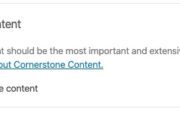

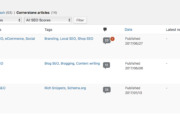


Marieke van de Rakt
Marieke van de Rakt is the founder of Yoast SEO Company Academy and CEO of Yoast. Her favorite SEO Company topics are SEO Company copywriting and site structure.

Optimizing your site structure should be an important aspect of your SEO Company strategy. A good site structure is of crucial importance for your SEO Company, as it makes it easier for both your users and Google to navigate your site. But how do you improve a site’s structure? Where do you start and how do you keep an eye on the structure of your site if it’s growing? In this post, I’ll teach you to improve your site’s structure in 4 simple steps.
Why improve your site structure?
Google follows links. And these links are also part of a great site structure. If a URL gets many links (whether it’s internal or external links), it must be an important page and search engines might rank it higher. But you shouldn’t just place links for Google. Readers also love sites that are easy to navigate and show suggested readings that make sense. That’s why it’s time to invest a bit in your site structure!
Step 1: Update and improve your cornerstones
Your cornerstone content consists of the most important articles on your site. The ones you want people to read; the ones you want to rank with in Google. They should be the most complete and well-written articles on your website. In this first step, you should take a closer look at them. Are they really of outstanding quality? Informative and easy to read? If not, start improving them!
If you use Yoast SEO Company, you should check the box in the Yoast SEO Company sidebar for all your cornerstone content articles:

Mark your most important content as cornerstone content in the Yoast SEO Company sidebar
Once you’ve checked that box, the content on this page will be assessed more strictly by our readability analysis. You may wonder why we’re so fussy about cornerstone content. The answer to that question is this: for cornerstone articles you should raise the bar because they’re very important! They should be better than your other articles and, therefore, demand more of your writing skills. Our cornerstone analysis will help you to raise your standards (and stick to them). It will be harder to score that green bullet. You have to do all the important things right!
Read more: How to use Yoast SEO for your cornerstone content strategy »
Step 2: Link to those cornerstones!
The second step to improving your site’s structure is to ensure that blog posts about a certain topic all link to your most important article about that topic. Checking this might be a lot of work, but fortunately, Yoast SEO Company is here to help!
In Yoast SEO Company, you can use the text link counter to see whether your cornerstones have enough links. In your post overview, you can select your cornerstone articles:

The text link counter in the post overview instantly makes clear which posts need more internal links.
In our example, the Ultimate guide to small business SEO has fewer internal links to it (9, to be exact) than our other two ultimate guides (16 and 31), so we should look into that. It’s easy to lose sight of your internal link distribution, but this tool allows you to steadily work through your cornerstone posts. Use your internal search function and search for the keyword of your cornerstone article. The posts that come up in this search query should be linking to your cornerstones. So, check if that’s the case and add links if they’re not there yet!
Even easier internal linking with Yoast’s internal linking tool
Looking up relevant posts manually probably sounds like a bit of a hassle. Luckily, Yoast SEO Premium makes it even easier with its internal linking feature! It works in two ways. Of course, first and foremost, it reminds you to link to your cornerstones as you’re writing new content. But you can also open cornerstone articles with few links and look at the suggestions of the Yoast internal linking feature. The articles our internal linking tool suggests are great posts to add links to your cornerstones. You should go through these articles one by one and add these links to your cornerstone post for a relevant passage, with a good anchor text.
Do these articles relevant to your cornerstone post also link to it? Time to check and add links!
Step 3: Add links to (good) orphaned articles
Once you’ve improved your cornerstone articles and made sure you’ve added links from all related posts to those cornerstones, it’s time to make sure that there is no orphaned content on your site. Orphaned articles are posts or pages that don’t get any internal links. They are hard to find on your site, for both your audience and Google. To easily identify orphaned articles, Yoast SEO Premium has the orphaned content filter, which instantly shows you all posts without internal links to them. Alternatively, you can use our text link counter to see which posts have no internal links to them.

The orphaned content filter shows you all posts that need some internal links.
Open these posts and check if they’re still up to date and useful. If you use Yoast SEO Premium, just check the suggestions of the internal linking tool. Using the tool, you can make a list of posts that should be linking to your orphaned posts. After that, you can open those similar posts and add links to your orphaned posts. You can also use the search function to find relevant posts to link to your orphaned article.
Step 4: Avoid those dead ends!
Every post should have suggestions for further reading. After all, you want people to stay on your website. But don’t just go adding random links to every post: suggestions should always be on topic. People reading about ballet shoes are probably interested in ballet shoes. So, offer them more reading material on ballet or on ballet shoes, but don’t bore them with posts about karate.
Open your post overview and sort your posts by the number of internal links in the post, using our text link counter.

Open the posts with fewest internal links. Add links to similar posts using our internal linking tool, in the same way as described above. It’s easy and will increase the time people spend on your site considerably.
If you want to easily add related links to hierarchical pages, you can use Yoast SEO Company Premium’s sub-pages or siblings block in the WordPress block editor. As child pages are often related to each other and their parent page, this makes sense most of the time. Of course, always check if this is the case, as you know your audience best!
Check out this video to find out how they work:
youtube
Keep reading: Internal linking for SEO: why and how »
Time to improve your site structure!
Agreed, it is a bit of work. But if you set to mind to it, follow these 4 steps, and use the Yoast SEO Company (Premium) site structure features, you’ll be able to improve your site’s structure significantly. Which will definitely result in longer visits by your readers and higher rankings in Google. Well worth the effort, wouldn’t you say?
Read on: Site structure: the ultimate guide »
SEO Company by DBL07.co
source http://www.scpie.org/improve-your-site-structure-in-4-simple-steps/
0 notes
Text
Improve your site structure in 4 simple steps

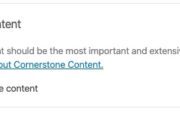


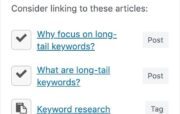
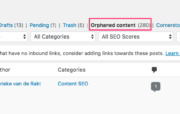
Marieke van de Rakt
Marieke van de Rakt is the founder of Yoast SEO Company Academy and CEO of Yoast. Her favorite SEO Company topics are SEO Company copywriting and site structure.

Optimizing your site structure should be an important aspect of your SEO Company strategy. A good site structure is of crucial importance for your SEO Company, as it makes it easier for both your users and Google to navigate your site. But how do you improve a site’s structure? Where do you start and how do you keep an eye on the structure of your site if it’s growing? In this post, I’ll teach you to improve your site’s structure in 4 simple steps.
Why improve your site structure?
Google follows links. And these links are also part of a great site structure. If a URL gets many links (whether it’s internal or external links), it must be an important page and search engines might rank it higher. But you shouldn’t just place links for Google. Readers also love sites that are easy to navigate and show suggested readings that make sense. That’s why it’s time to invest a bit in your site structure!
Step 1: Update and improve your cornerstones
Your cornerstone content consists of the most important articles on your site. The ones you want people to read; the ones you want to rank with in Google. They should be the most complete and well-written articles on your website. In this first step, you should take a closer look at them. Are they really of outstanding quality? Informative and easy to read? If not, start improving them!
If you use Yoast SEO Company, you should check the box in the Yoast SEO Company sidebar for all your cornerstone content articles:

Mark your most important content as cornerstone content in the Yoast SEO Company sidebar
Once you’ve checked that box, the content on this page will be assessed more strictly by our readability analysis. You may wonder why we’re so fussy about cornerstone content. The answer to that question is this: for cornerstone articles you should raise the bar because they’re very important! They should be better than your other articles and, therefore, demand more of your writing skills. Our cornerstone analysis will help you to raise your standards (and stick to them). It will be harder to score that green bullet. You have to do all the important things right!
Read more: How to use Yoast SEO for your cornerstone content strategy »
Step 2: Link to those cornerstones!
The second step to improving your site’s structure is to ensure that blog posts about a certain topic all link to your most important article about that topic. Checking this might be a lot of work, but fortunately, Yoast SEO Company is here to help!
In Yoast SEO Company, you can use the text link counter to see whether your cornerstones have enough links. In your post overview, you can select your cornerstone articles:

The text link counter in the post overview instantly makes clear which posts need more internal links.
In our example, the Ultimate guide to small business SEO has fewer internal links to it (9, to be exact) than our other two ultimate guides (16 and 31), so we should look into that. It’s easy to lose sight of your internal link distribution, but this tool allows you to steadily work through your cornerstone posts. Use your internal search function and search for the keyword of your cornerstone article. The posts that come up in this search query should be linking to your cornerstones. So, check if that’s the case and add links if they’re not there yet!
Even easier internal linking with Yoast’s internal linking tool
Looking up relevant posts manually probably sounds like a bit of a hassle. Luckily, Yoast SEO Premium makes it even easier with its internal linking feature! It works in two ways. Of course, first and foremost, it reminds you to link to your cornerstones as you’re writing new content. But you can also open cornerstone articles with few links and look at the suggestions of the Yoast internal linking feature. The articles our internal linking tool suggests are great posts to add links to your cornerstones. You should go through these articles one by one and add these links to your cornerstone post for a relevant passage, with a good anchor text.
Do these articles relevant to your cornerstone post also link to it? Time to check and add links!
Step 3: Add links to (good) orphaned articles
Once you’ve improved your cornerstone articles and made sure you’ve added links from all related posts to those cornerstones, it’s time to make sure that there is no orphaned content on your site. Orphaned articles are posts or pages that don’t get any internal links. They are hard to find on your site, for both your audience and Google. To easily identify orphaned articles, Yoast SEO Premium has the orphaned content filter, which instantly shows you all posts without internal links to them. Alternatively, you can use our text link counter to see which posts have no internal links to them.

The orphaned content filter shows you all posts that need some internal links.
Open these posts and check if they’re still up to date and useful. If you use Yoast SEO Premium, just check the suggestions of the internal linking tool. Using the tool, you can make a list of posts that should be linking to your orphaned posts. After that, you can open those similar posts and add links to your orphaned posts. You can also use the search function to find relevant posts to link to your orphaned article.
Step 4: Avoid those dead ends!
Every post should have suggestions for further reading. After all, you want people to stay on your website. But don’t just go adding random links to every post: suggestions should always be on topic. People reading about ballet shoes are probably interested in ballet shoes. So, offer them more reading material on ballet or on ballet shoes, but don’t bore them with posts about karate.
Open your post overview and sort your posts by the number of internal links in the post, using our text link counter.

Open the posts with fewest internal links. Add links to similar posts using our internal linking tool, in the same way as described above. It’s easy and will increase the time people spend on your site considerably.
If you want to easily add related links to hierarchical pages, you can use Yoast SEO Company Premium’s sub-pages or siblings block in the WordPress block editor. As child pages are often related to each other and their parent page, this makes sense most of the time. Of course, always check if this is the case, as you know your audience best!
Check out this video to find out how they work:
youtube
Keep reading: Internal linking for SEO: why and how »
Time to improve your site structure!
Agreed, it is a bit of work. But if you set to mind to it, follow these 4 steps, and use the Yoast SEO Company (Premium) site structure features, you’ll be able to improve your site’s structure significantly. Which will definitely result in longer visits by your readers and higher rankings in Google. Well worth the effort, wouldn’t you say?
Read on: Site structure: the ultimate guide »
SEO Company by DBL07.co
source http://www.scpie.org/improve-your-site-structure-in-4-simple-steps/
source https://scpie1.blogspot.com/2020/08/improve-your-site-structure-in-4-simple.html
0 notes
Text
My Quick Labour&Delivery Story!
**Disclaimer - I'm gonna be completely honest in this post, therefore some of it may be TMI, apologies if this causes offence to anyone reading..**
Sit back and make yourself a drink, get a snack and relax, cause this is gonna be a long one. This is something I've wanted to write about for a long long time now, much because when pregnant I was obsessed with reading about and watching video's on YouTube of other people's experiences, and much because I want to look back and revisit this when it all isn't so fresh in my memory, so here it goes.. here is my labour and delivery story!
So I'll start of with a bit of background about my pregnancy seeing as though I have started this blog late and didn't document anything to do with my pregnancy (gutted!). At 20 weeks pregnant I found out that I had a "low lying placenta", this came about because I had started bleeding, quite a lot actually and it had tiny clots in it, fearing the worst I went straight to Maternity Triage at Walsall Manor Hospital, had a Speculum examination (which was absolutely horrid) to try and find out where the bleeding was coming from - luckily they had hooked me up to the monitors and they had found her heartbeat straight away, which reassured me and made me stop panicking as much as I was! anyway after the examination was carried out they decided to admit me onto a ward and keep an eye on me and the bleeding and that my 20 week scan should be pushed forward so that they could see where about the placenta was. The staff on the ward were amazing and the next day I was taken down for a scan, and it was confirmed that I infact did have a low lying placenta which had caused the bleed. I was told that it would move up as my stomach grew, but if it didn't I would have to have a C-section. I was booked for a re scan at 36 weeks to see if there had been any change. There was good news at this scan though! I also found out that I was gonna have a baby girl! (For anyone that may be unaware of what a low lying placenta is - I didn't until I knew I had one! It's when baby lays on top of the placenta, when it should be surrounding baby, it means that if you were to try and give birth vaginally, the placenta would come out first. Which can cause a lot of problems for both you and baby)
After about 2 days the bleeding completely stopped and on day 3 I was discharged to go home, I couldn't stop thinking that I could possibly have to have a C-section and it scared the living day lights out of me, I spent hours upon hours reading and watching YouTube videos about it, and more to the point - the recovery from having one and eventually I came round to the idea, although I was hoping and praying that I would be able to have a vaginal birth. Fast forward a few weeks and it was time for me to have my 36 week growth scan and luckily my placenta had moved up and was no longer an issue, I was so relieved that I would have the option of a natural birth - not that there's anything wrong with C-sections, the idea just scared me quite a lot!
Onto the actual labour and delivery bit now! (If you've read this far, thank you! its actually taken me about 2 hours to write this far as I've just settled baby for a nap. She's now in her Mothercare loved so much sit me up cosy dozing away). Anyway.. at 40 weeks, I was booked for a sweep at home with my midwife. I should mention at this point that I had been recommended to start taking Raspberry Leaf tablets from Holland and Barret by a friend, you can take them from 30 weeks but I didn't start until after I found out what was happening with my placenta - so 36 weeks - They're not meant to bring on labour but the aim of them is to help your cervix and strengthen everything in that area, to make for a quicker labour/delivery and also help afterwards. My midwife came and explained what a sweep was and did all of her normal checks for 40 weeks, she said that my cervix wasn't doing much and she was going to try and bring it forward as it was still quite prosterior. I will be honest I was starting to give up at this stage, I genuinely believed I was going to be pregnant forever and I would never go into labour by myself. After the sweep I had a tiny bleed which she did tell me to expect, but nothing else really happened after that. I was booked for another sweep a week later, on a Monday and she told me I would also be booked to be induced if nothing had happened by then, I was so ready to have this baby that by this point I didn't care if i was sectioned, induced or what - I just wanted her here! the day before my second sweep I started to have a few niggly pains, I was unsure wether they were the beginning of contractions as I had never experienced them before so I wasn't too sure if I should be excited or not, I had a bath and went to bed and by morning they had stopped, but I had a lot of pressure down below, but today was the day of my second sweep and I was genuinely excited for it, if the sweep didn't work I knew I would have a day that I had to get to where they would start helping me along.
She started the sweep and I remember her telling me that there was a massive difference from last time - she said that I had dilated to 2 cm and my cervix had started to thin out, and that the pains I had the night before were things going in the right direction and obviously had started things off, I was booked for my induction that day too and off I went, happy as larry that things had started to progress, even though it was only 2 cm it gave me the boost I needed. I live by myself as I don't have a partner - that's another story for another day - so the last thing I wanted was for something to happen early hours of the morning and for me to be alone and to not know what to do, so I asked my dad if he would mind coming up and staying on the sofa over night just incase - and I'm so SO glad I did. Around 7:30pm I started to have a few pains again but they were irregular, as time went on I noticed them more and they became consistent and strong, I had an app on my phone that could time contractions so I started using it and it worked out that my contractions were about 7 minutes apart lasting 45-60 seconds each. I went to bed and expected them to subside again, but they didn't - they were getting stronger by contraction and at 12am I rang the maternity ward. I was told it was too early for me to go in and that I should wait till they were 3-4 minutes apart and to have a warm bath and a paracetamol for the mean time. Which I thought was ridiculous by the way as a paracetamol barely gets rid of a headache! I did as she said and ran myself a bath, the water was honestly the best most soothing ever and if I was to ever have any more babies I would 100% consider a water birth. It was like I was in a massive hot water bottle lol! Whilst in the bath the pains eased and kind of slowed down which led me to believe it was another false alarm, so I got out of the bath - well attempted - I had one leg out of the bath and I had a contraction, and it was stronger than the ones I had before I got in, I then had a "bloody show" and from then onwards the contractions were back to back and very strong.
I told my dad to ring the ward back as by this point I was leaning over the bed crying, barely able to string a sentence together and I heard the lady on the phone say to bring me up but they "may have to send me home" which really annoyed me. Its like you almost have to be pushing before they'll see you, which funnily enough was basically my case. We waited for my aunt to pick us up and take us in which felt like forever, I threw up and I couldn't sit down, with every contraction I was lifting myself off of the seat in the car. When we got there, it was around 3:15 am.. there was a random wheelchair outside which my aunt grabbed and sat me in to wheel me down to Triage. There was two rooms opposite eachother that were "assessment rooms" and then some double doors leading to the delivery rooms. I remember clinging on to my birthing partner - my good friends arm and telling her I felt like I needed to push, it felt like everything around me was just going too slow and I needed them to see me NOW! the midwife came to me and told me she was just going to take me to be assessed to which my reply was "No, I need to push" and I think she could tell by the way I was reacting to each pain that I wasn't over exaggerating, she took me into Delivery Room 5 and gave me a gown to put on, she checked me and told me I was 5 cm dilated and my cervix had completely thinned out, she offered me gas and air which I didn't like at all - it didn't do anything for me whatsoever except for make me giggle and go a little light headed, it came in handy for pushing though, purely to bite down on! every contraction I had I felt like the only relief I was going to get was if I pushed, there was so much pressure that my body just started to do it itself.. it's amazing what your body can do isn't it? The midwife looking after me told me she was going out of the room to get something and if I needed her to just press the buzzer, the second she left the room I had another contraction and found myself trying to push, so I pressed the buzzer and she came back in, she was amazing - she really listened to me and encouraged me to keep going. She checked me again and pressed the orange button on the wall, which scared me because on TV that means something is wrong! another midwife came in and I heard her say to her that I had gone from 5 cm to 10 cm in one contraction which I was completely amazed (and relieved by) although baby's heart rate had been lost as she had gone so far down into my pelvis that the monitor was no longer picking it up, they attatched something to the top of her head to be able to trace it and I started pushing, the midwives were great as they really encouraged me with every push and told me I was doing amazingly - which when you're in a situation like that you do really need, so I was very grateful to both of them. They told me that they would have to cut me slightly to help baby come out as quickly as possible due to how fast it had all progressed. I was given an injection of anesthetic which I was told I screamed more at than the actual labour/delivery part lol! I carried on pushing and before I knew it her head was out, which I did look at - It was like a big prune! - She was born at 3:58am and she was and still is absolutely perfect, I have never felt love like it until I held my baby for the first time. I was shown how to get her to latch on and she fed on me, we had a lot of skin to skin all whilst I was being stitched back up. It was the most positive, amazing experience I've ever had and I will always cherish it. I was so lucky to have such an easy, fast birth. And I do definitely think that those Raspberry Leaf tablets helped with that, and definitely with healing afterwards. I would highly recommend them to anyone that's pregnant and wondering wether or not to try them.
So that's about it! there's my positive labour and delivery story. I write this whilst my baby girl is in her bouncer babbling away and smiling back at me! I am so beyond words in love with her and I wouldn't change a thing. So please welcome to the world my now nearly one year old baby girl.. Esmae Olivia born on the 10th of May 2016. Weighing 5lbs
Thank you if you've read this and shared my experience with me, I would love to hear yours!
#mommy#mommyblogger#labour#labouranddelivery#deliver#birth#baby#baby girl#labour and delivery#mom#mommylife#mumblr#mum#mummy life#mummy blog#blog#lgblog#momblog#mumblog
2 notes
·
View notes
Photo

The Happy List (Volume II)
Hi, frieeeends! So yup, I am back with my ‘The Happy List’ and I decided to do this as a monthly blog post to share the things, events, people and whatnot that makes me happy.
Illuminate World Tour - It’s pretty obvious that this one’s gotta be the highlight of this list since it is my first time to attend a concert. Not just a concert of some random artist but it is Shawn’s concert!! I have waited for this for soooo long since I bought the ticket last June 2016. Originally the concert was scheduled last October 26, 2016 (the day before my birthday hehehehe) but it was postponed and moved to March 18, 2017. But it was worth the wait since the experience was memorable + fun + one of a kind!
New friends + Internet friends - I met these 2 girls in Shawn’s concert, Desiree and Karylle. Also, Nadine whom I met through my Twitter fan account.
National Certificate II Food and Beverage Services - Luckily, I passed the assessment and got good feedbacks from the assessor. Yay!
Photoshoot - with my sister using my polaroid. Yas, we wasted filmsss hehehe.
Blackbear, RAC and LANY - Good music!!
Survived 11th Grade - Finallyyy it’s oveeer! Plus I was not really expecting to receive awards but then I got eight! Hooraaay!
CALIFORNIA MAKIIIIIII
Food-trips with Friends
Sleeping and waking up late
YouTube :P
P.S. I started this list last March 19 (and posted this privately that’s why it says “Posted on March 19, 2017″ because I totally forgot to save this as a draft) but I just finished this last April 2. Hehe that’s all.
All the love, T 💖
1 note
·
View note
Text
The World Anti-Doping Agency Just Gave Olympic Athletes the Green Light to Use CBD Products
The World Anti-Doping Agency just gave Olympic athletes the green light to use CBD products - or cannabinoids - to manage their pain.
And it only took 2,800 years. More on that in a moment…
The ancient Greek physician
Pedanius Dioscorides wrote extensively about CBD and cannabis in his
five-volume medical text.
This is huge news for people who depend on their bodies to perform at peak levels day in and day out.
But it's also big news for my patients at the Sears Institute for Anti-Aging Medicine.
You see, living where I do in South Florida, I have a lot of patients of retirement age. And they moved to this area so they could enjoy their days outdoors playing golf and tennis all year round.
But the aches and pains that go along with getting older sometimes keep my patients from doing the things they love.
My patients want natural solutions to treat their pain. And that's what I offer them. But now, I have a new tool in my arsenal that's highly effective, natural and safe - CBD.
You see, my patients know that Big Pharma's painkillers are not a good long-term choice. By now, everyone is aware of the opioid epidemic in our country. But even over-the-counter pain meds are dangerous…
Low-dose aspirin is toxic when taken too often. Regular use increases your risk of bleeding, getting ulcers, developing hearing loss and having liver and kidney failure.1 Even conventional doctors and the FDA have stopped recommending that everyone take a low-dose aspirin daily because they finally get that the risks outweigh any benefit.
Acetaminophen, or Tylenol, is marketed as the world's safest drug. But recent studies found it can increase blood pressure, double your risk of certain cancers, lead to broken bones and cause liver damage.2,3,4,5
NSAIDs increase your risk of heart attack and stroke - within just one week of consistent use. And the more you use, the more your risk goes up.6
Cannabis-based remedies were one of the world's leading medicines for thousands of years.
The two oldest forms of medicine - Ayurveda and Chinese - used CBD oil to treat everything from high blood pressure and cancer to sexual dysfunction and pain. And the ancient Egyptians wrote extensively about it in the world's oldest medical textbook, the Ebers Papyrus.
And as it turns out, the very first Olympians, back in 776 B.C., used CBD oil to treat a variety of illnesses and ailments.
Years later, the ancient Greek physician Pedanius Dioscorides, wrote extensively about it in his medical text De Materia Medica.
In this five-volume pharmacopoeia, he said that “[cannabis] is a plant of much use in this life” and that its uses include… “the treatment of inflammation and [arthritis],” as well as the “twisting of the sinews,” or tendons.7
CBD was also widely used extensively in America until the 1930s. In fact, it made up half of all medicines prescribed and sold.
But then the government got involved and declared this lifesaving drug illegal. Luckily, they've reversed course in recent years. Today, CBD products are legal in some states.
That's a relief for a lot of my patients because CBD is leading a pain-relieving revolution we haven't seen since the invention of aspirin. And today's research backs up what 10,000 years of use has found.
A 2012 study published in the Journal of Experimental Medicine found that CBD significantly suppressed chronic inflammation and pain in animals without causing either tolerance or addiction.8
In a separate study, researchers applied CBD oil to severely arthritic rats for four days. Their research reported a significant drop in inflammation and pain, without side effects.9
A third study followed 2,700 cancer patients in severe pain for six months. After using CBD oil, almost every single study participant reported that their chronic pain was cut in half - with none of the side effects they got from their prescription medications.
If severe pain were all that CBD treated, I'd still recommend it. But this miracle oil has also been proven to treat cancer, diabetes, Alzheimer's and heart disease. Look for more on that in a future letter…
Knock Out Pain with These 3 Herbal Remedies
Take the original aspirin. White willow bark contains salicin, the same compound found in aspirin. It comes from a tree native to Europe and Asia. Hippocrates had his patients chew on white willow bark to reduce inflammation.
Studies show it not only relieves arthritis pain but also increases mobility in the back, knees, hips and other joints. And a study in the American Journal of Medicine found it extremely effective for lower back pain.
I recommend 240 mg per day.
Try the “golden miracle.” That's what I call curcumin. This South Indian spice has 619 health benefits that are supported by nearly 7,000 studies. But curcumin is best known as a powerful anti-inflammatory. In fact, studies show it reduces arthritis joint pain by 60% and joint swelling by 73%. Another clinical trial found it was more effective than prescription strength NSAID.
Look for a supplement that contains piperine. This black pepper extract boosts absorbency by 2,000%.
I recommend 400 mg to 500 mg twice a day.
Use this “NSAID substitute.” That's how researchers at the University of Miami refer to ginger. In their study, they compared a ginger extract to a placebo in 247 patients with osteoarthritis. The ginger reduced pain and stiffness in knee joints by 40% over the placebo.11 And a second study in the Journal of Alternative and Complementary Medicine found that ginger reduce pain in both muscles and joints by as much as 25%.12
Ginger contains 12 different compounds that fight excess inflammation. Some block the enzyme which triggers it. Some lower pain-receptor and nerve-ending sensitivity. Together they work as well as any over-the-counter remedy you can find.
I recommend you take 750 mg of liquid ginger extract a day.
To Your Good Health,
Al Sears, MD, CNS
P.S. I'm currently working on my own CBD product to release in the next couple of months. With my decades of experience searching for natural herbal cures around the world, this seemed like the obvious next step.
The studies and research I've read have been incredible. And I can't wait to share this new powerful no-prescription-required treatment with my patients. Stay tuned!
1. Harvard Health Letter. Weighing the risks and benefits of aspirin therapy. https://www.health.harvard.edu/heart-health/weighing-the-risks-and-benefits-of-aspirin-therapy. November 2017. Accessed on August 17, 2018.
2. Harvard Health Letter. Acetaminophen may boost blood pressure. February 2011. https://www.health.harvard.edu/heart-health/acetaminophen-may-boost-blood-pressure. Accessed May 8, 2018.
3. Walter RB, et al. “Long-term use of acetaminophen, aspirin, and other nonsteroidal anti-inflammatory drugs and risk of hematologic malignancies: results from the prospective Vitamins and Lifestyle (VITAL) study.” J Clin Oncol. 2011;29(17):2424-2431.
4. Williams LJ, et. al. “Paracetamol (acetaminophen) use, fracture and bone mineral density.” Bone. 2011;48(6):1277-1281.
5. FDA U.S. Food & Drug Administration. Can an aspirin a day help prevent a heart attack?
6. Harvard Health Publishing. FDA strengthens warning that NSAIDs increase heart attack and stroke risk. https://www.health.harvard.edu/blog/fda-strengthens-warning-that-nsaids-increase-heart-attack-and-stroke-risk-201507138138. Updated August 22, 2017. Accessed on August 17, 2018.
7. Pedanius Dioscorides. Full Text of De Materia Medica. https://archive.org/stream/de-materia-medica/scribd-download.com_dioscorides-de-materia-medica_djvu.txt. Accessed on August 17, 2018.
8. Xiong W, et al. “Cannabinoids suppress inflammatory and neuropathic pain by targeting α3 glycine receptors.” J Exp Med. 2012;209(6):1121-1134.
9. Hammell DC, et al. “Transdermal cannabidiol reduces inflammation and pain-related behaviours in a rat model of arthritis.” Eur J Pain. 2016; 20(6): 936-948.
10. Chandran B and Goel A. “A randomized, pilot study to assess the efficacy and safety of curcumin in patients with active rheumatoid arthritis.” Phytother Res. 2012;26(11):1719-1725.
11. Altman RD and Marcussen KC. “Effects of a ginger extract on knee pain in patients with osteoarthritis.” Arthritis Rheum. 2001;44(11):2531-2538.
12. Ozgoli G, et al. “Comparison of effects of ginger, mefenamic acid, and ibuprofen on pain in women with primary dysmenorrhea.” J Altern Complement Med. 2009;15(2):129-132.
The post The World Anti-Doping Agency Just Gave Olympic Athletes the Green Light to Use CBD Products appeared first on Dr. Al Sears, MD Anti Aging Pioneer Alternative Health Newsletter.
0 notes
Text
The World Anti-Doping Agency Just Gave Olympic Athletes the Green Light to Use CBD Products
The World Anti-Doping Agency just gave Olympic athletes the green light to use CBD products - or cannabinoids - to manage their pain.
And it only took 2,800 years. More on that in a moment…
The ancient Greek physician
Pedanius Dioscorides wrote extensively about CBD and cannabis in his
five-volume medical text.
This is huge news for people who depend on their bodies to perform at peak levels day in and day out.
But it's also big news for my patients at the Sears Institute for Anti-Aging Medicine.
You see, living where I do in South Florida, I have a lot of patients of retirement age. And they moved to this area so they could enjoy their days outdoors playing golf and tennis all year round.
But the aches and pains that go along with getting older sometimes keep my patients from doing the things they love.
My patients want natural solutions to treat their pain. And that's what I offer them. But now, I have a new tool in my arsenal that's highly effective, natural and safe - CBD.
You see, my patients know that Big Pharma's painkillers are not a good long-term choice. By now, everyone is aware of the opioid epidemic in our country. But even over-the-counter pain meds are dangerous…
Low-dose aspirin is toxic when taken too often. Regular use increases your risk of bleeding, getting ulcers, developing hearing loss and having liver and kidney failure.1 Even conventional doctors and the FDA have stopped recommending that everyone take a low-dose aspirin daily because they finally get that the risks outweigh any benefit.
Acetaminophen, or Tylenol, is marketed as the world's safest drug. But recent studies found it can increase blood pressure, double your risk of certain cancers, lead to broken bones and cause liver damage.2,3,4,5
NSAIDs increase your risk of heart attack and stroke - within just one week of consistent use. And the more you use, the more your risk goes up.6
Cannabis-based remedies were one of the world's leading medicines for thousands of years.
The two oldest forms of medicine - Ayurveda and Chinese - used CBD oil to treat everything from high blood pressure and cancer to sexual dysfunction and pain. And the ancient Egyptians wrote extensively about it in the world's oldest medical textbook, the Ebers Papyrus.
And as it turns out, the very first Olympians, back in 776 B.C., used CBD oil to treat a variety of illnesses and ailments.
Years later, the ancient Greek physician Pedanius Dioscorides, wrote extensively about it in his medical text De Materia Medica.
In this five-volume pharmacopoeia, he said that “[cannabis] is a plant of much use in this life” and that its uses include… “the treatment of inflammation and [arthritis],” as well as the “twisting of the sinews,” or tendons.7
CBD was also widely used extensively in America until the 1930s. In fact, it made up half of all medicines prescribed and sold.
But then the government got involved and declared this lifesaving drug illegal. Luckily, they've reversed course in recent years. Today, CBD products are legal in some states.
That's a relief for a lot of my patients because CBD is leading a pain-relieving revolution we haven't seen since the invention of aspirin. And today's research backs up what 10,000 years of use has found.
A 2012 study published in the Journal of Experimental Medicine found that CBD significantly suppressed chronic inflammation and pain in animals without causing either tolerance or addiction.8
In a separate study, researchers applied CBD oil to severely arthritic rats for four days. Their research reported a significant drop in inflammation and pain, without side effects.9
A third study followed 2,700 cancer patients in severe pain for six months. After using CBD oil, almost every single study participant reported that their chronic pain was cut in half - with none of the side effects they got from their prescription medications.
If severe pain were all that CBD treated, I'd still recommend it. But this miracle oil has also been proven to treat cancer, diabetes, Alzheimer's and heart disease. Look for more on that in a future letter…
Knock Out Pain with These 3 Herbal Remedies
Take the original aspirin. White willow bark contains salicin, the same compound found in aspirin. It comes from a tree native to Europe and Asia. Hippocrates had his patients chew on white willow bark to reduce inflammation.
Studies show it not only relieves arthritis pain but also increases mobility in the back, knees, hips and other joints. And a study in the American Journal of Medicine found it extremely effective for lower back pain.
I recommend 240 mg per day.
Try the “golden miracle.” That's what I call curcumin. This South Indian spice has 619 health benefits that are supported by nearly 7,000 studies. But curcumin is best known as a powerful anti-inflammatory. In fact, studies show it reduces arthritis joint pain by 60% and joint swelling by 73%. Another clinical trial found it was more effective than prescription strength NSAID.
Look for a supplement that contains piperine. This black pepper extract boosts absorbency by 2,000%.
I recommend 400 mg to 500 mg twice a day.
Use this “NSAID substitute.” That's how researchers at the University of Miami refer to ginger. In their study, they compared a ginger extract to a placebo in 247 patients with osteoarthritis. The ginger reduced pain and stiffness in knee joints by 40% over the placebo.11 And a second study in the Journal of Alternative and Complementary Medicine found that ginger reduce pain in both muscles and joints by as much as 25%.12
Ginger contains 12 different compounds that fight excess inflammation. Some block the enzyme which triggers it. Some lower pain-receptor and nerve-ending sensitivity. Together they work as well as any over-the-counter remedy you can find.
I recommend you take 750 mg of liquid ginger extract a day.
To Your Good Health,
Al Sears, MD, CNS
P.S. I'm currently working on my own CBD product to release in the next couple of months. With my decades of experience searching for natural herbal cures around the world, this seemed like the obvious next step.
The studies and research I've read have been incredible. And I can't wait to share this new powerful no-prescription-required treatment with my patients. Stay tuned!
1. Harvard Health Letter. Weighing the risks and benefits of aspirin therapy. https://www.health.harvard.edu/heart-health/weighing-the-risks-and-benefits-of-aspirin-therapy. November 2017. Accessed on August 17, 2018.
2. Harvard Health Letter. Acetaminophen may boost blood pressure. February 2011. https://www.health.harvard.edu/heart-health/acetaminophen-may-boost-blood-pressure. Accessed May 8, 2018.
3. Walter RB, et al. “Long-term use of acetaminophen, aspirin, and other nonsteroidal anti-inflammatory drugs and risk of hematologic malignancies: results from the prospective Vitamins and Lifestyle (VITAL) study.” J Clin Oncol. 2011;29(17):2424-2431.
4. Williams LJ, et. al. “Paracetamol (acetaminophen) use, fracture and bone mineral density.” Bone. 2011;48(6):1277-1281.
5. FDA U.S. Food & Drug Administration. Can an aspirin a day help prevent a heart attack?
6. Harvard Health Publishing. FDA strengthens warning that NSAIDs increase heart attack and stroke risk. https://www.health.harvard.edu/blog/fda-strengthens-warning-that-nsaids-increase-heart-attack-and-stroke-risk-201507138138. Updated August 22, 2017. Accessed on August 17, 2018.
7. Pedanius Dioscorides. Full Text of De Materia Medica. https://archive.org/stream/de-materia-medica/scribd-download.com_dioscorides-de-materia-medica_djvu.txt. Accessed on August 17, 2018.
8. Xiong W, et al. “Cannabinoids suppress inflammatory and neuropathic pain by targeting α3 glycine receptors.” J Exp Med. 2012;209(6):1121-1134.
9. Hammell DC, et al. “Transdermal cannabidiol reduces inflammation and pain-related behaviours in a rat model of arthritis.” Eur J Pain. 2016; 20(6): 936-948.
10. Chandran B and Goel A. “A randomized, pilot study to assess the efficacy and safety of curcumin in patients with active rheumatoid arthritis.” Phytother Res. 2012;26(11):1719-1725.
11. Altman RD and Marcussen KC. “Effects of a ginger extract on knee pain in patients with osteoarthritis.” Arthritis Rheum. 2001;44(11):2531-2538.
12. Ozgoli G, et al. “Comparison of effects of ginger, mefenamic acid, and ibuprofen on pain in women with primary dysmenorrhea.” J Altern Complement Med. 2009;15(2):129-132.
The post The World Anti-Doping Agency Just Gave Olympic Athletes the Green Light to Use CBD Products appeared first on Dr. Al Sears, MD Anti Aging Pioneer Alternative Health Newsletter.
0 notes
Text
Why is Google ranking the wrong page?

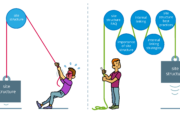
Marieke van de Rakt
Marieke van de Rakt is the founder of Yoast SEO Company Academy and CEO of Yoast. Her favorite SEO Company topics are SEO Company copywriting and site structure.

Your post is optimized, all your bullets in Yoast SEO Company are green and still, the post you want to rank with does not rank for that keyword. And yet, another page on your website does show up in the results. But that’s not the one you wanted to rank highest with. Why is Google ranking the wrong page? What can you do to change this? In this post, I’ll explore possible causes for why this is happening. And more importantly, I’ll help you fix it!
Explanations for wrong page ranking
If the wrong page turns up in the Search Engine Result Pages (SERPs), it means that Google thinks that this page is a better fit than the post you want to rank with. So why does Google think that? The most plausible cause for having the ‘wrong’ page show up in the search results is keyword cannibalization. But before we go into that, I have to mention another reason, which has to do with search intent.
A mismatch in search intent
One reason that the wrong page is showing up in the search results, is a mismatch in search intent. It could well be that you’ve written an informative article about a product that you sell, but you also have a product page for this specific product. This makes perfect sense, as these pages are focused on a different search intent. But if Google isn’t able to recognize the intended search, the wrong page could end up in the SERPs.
Read more: Use the SERPs to create intent-based content »
Keyword cannibalization
In most cases, the wrong page showing up is caused by keyword cannibalization. This means that you have more than one post or page on your site that can rank for the same search query. If you have multiple pages and posts about the same topic, perhaps even optimized for similar keywords, Google will get confused. It won’t know which one of your articles to rank highest and this results in your articles competing with each other for a position in the SERPs. You might think this isn’t such a bad thing, but you’re cannibalizing your own content. Which means that both pages end up with a lower position in the results.
Recognize and fix keyword cannibalization
If you suspect that your site might be suffering from keyword cannibalization, it’s important to research this. Just Google your keyword specifically for your site. I’ll explain how this works by using Yoast.com as an example. By typing in site:yoast.com [specific keyword] on Google, it will give you all the posts and pages it finds and considers on Yoast.com for that specific keyword. If you have many pages competing for that same keyword, you’ll probably be experiencing some keyword cannibalization.
In order to start ranking with the right page in the SERPs, you should solve your keyword cannibalization problem. Although finding and fixing keyword cannibalization requires some serious effort, it will definitely pay off. You already know which page you want to rank with. You know which page is most important to you. Now you just have to make sure that Google knows it too.
Solve wrong page ranking with internal linking
Fixing keyword cannibalization helps you assess similar pages and take action to increase the rankings of the right pages. But that’s not all. In order to solve your problem with the wrong page ranking, you also need to improve your internal linking structure. After all, Google follows links. The way you structure your site, the way you internally link one page to the other, gives Google important clues about which pages are important (and which aren’t). Pages that have a lot of internal links will get more visits from the Google bots. But on pages with little or no internal links the Google bots will come around less often.
Pages that have a lot of internal links pointing towards them are deemed important. While pages with little or no internal links will not appear important (in the eyes of Google). That’s something you can act on! Make sure that the page you want to rank with has the most internal links pointing towards it. That way, you’re showing Google which article is most important with the use of internal linking.
The context of internal links
A great internal linking structure only works if your internal links are in context. They have to make sense. The page you want to rank with should have links from pages that are topically related to that specific page. Adding links from random pages to one of your pages does not work. Google just is too smart for that. And it’s bad user experience for your site users. Your internal linking should make sense so that users want to click on internal links, want to read more or to get more detailed information about a related topic.
Example: creating an internal linking setup
Let’s look at an example of how to set up a great internal linking strategy. Because it makes sense to write multiple articles about topics related to your business. So how do you make sure you’re not cannibalizing your own content? And how do you tell Google which article is the most important one?
Imagine you want to rank with the keyphrase [site structure]. That’s a rather competitive keyphrase. If you’re just starting out in blogging about site structure, it might be hard to rank for that term. A great strategy is to write different articles each focussing on a different aspect of site structure, for example: [site structure FAQ], [internal linking], [site structure best practices]. These search terms are less competitive and these articles will each drive some traffic to your website. However, how do you make sure that Google knows which article is most important?

Your internal linking structure is Google’s guide. You should make sure to put an internal link from each of these articles (site structure FAQ, internal linking, and so on) to that most important one – the ultimate guide to site structure. That way, Google will notice all these different blog posts pointing towards one article. That’ll give Google the information it needs to determine which one it should rank highest in the SERPs, in this case – the ultimate guide to site structure.
Also, it’s important to link to the related (and less important) posts from your ultimate guide. That way, your users will be able to navigate your site easily and Google will better understand the relationship between these articles. So make sure to link both ways.
Keep reading: More articles on internal linking »
Need help with your internal linking structure?
Setting up an internal linking structure can be rather hard. Especially if you have a lot of articles on your website. How do you find out which could be candidates to link to the article you want to rank with? Yoast SEO Company premium offers a renewed internal linking feature which helps you set up an awesome internal linking strategy. In this short video, I’ll explain how it works:
youtube
In a nutshell, our tool offers suggestions for internal links to similar articles to the one you’re writing. You’ll find the internal linking suggestions in the Yoast site bar while you’re working on your post. Also, cornerstone articles (those articles you most desperately want to rank with) are shown at the top of the list to make sure you don’t forget to link to them.
Conclusion on wrong page ranking
It can be very annoying when Google ranks the wrong page for a certain keyword. In many cases, this can be fixed by improving your internal linking structure. Make sure that other (less important) posts and pages link towards your most important post. That way, Google will know which post is most important to you and will be more likely to reward that with a higher ranking!
Your internal linking structure, your site structure, is like a guide to Google and therefore really important. Luckily, improving this structure is relatively easy and extremely actionable. So, good luck and start ranking with the right post!
Read on: Keyword research: the ultimate guide »
SEO Company by DBL07.co
source http://www.scpie.org/why-is-google-ranking-the-wrong-page/
source https://scpie1.blogspot.com/2020/08/why-is-google-ranking-wrong-page.html
0 notes
Text
Why is Google ranking the wrong page?
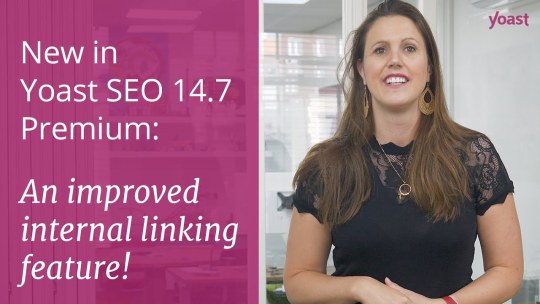
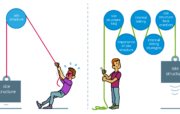
Marieke van de Rakt
Marieke van de Rakt is the founder of Yoast SEO Company Academy and CEO of Yoast. Her favorite SEO Company topics are SEO Company copywriting and site structure.

Your post is optimized, all your bullets in Yoast SEO Company are green and still, the post you want to rank with does not rank for that keyword. And yet, another page on your website does show up in the results. But that’s not the one you wanted to rank highest with. Why is Google ranking the wrong page? What can you do to change this? In this post, I’ll explore possible causes for why this is happening. And more importantly, I’ll help you fix it!
Explanations for wrong page ranking
If the wrong page turns up in the Search Engine Result Pages (SERPs), it means that Google thinks that this page is a better fit than the post you want to rank with. So why does Google think that? The most plausible cause for having the ‘wrong’ page show up in the search results is keyword cannibalization. But before we go into that, I have to mention another reason, which has to do with search intent.
A mismatch in search intent
One reason that the wrong page is showing up in the search results, is a mismatch in search intent. It could well be that you’ve written an informative article about a product that you sell, but you also have a product page for this specific product. This makes perfect sense, as these pages are focused on a different search intent. But if Google isn’t able to recognize the intended search, the wrong page could end up in the SERPs.
Read more: Use the SERPs to create intent-based content »
Keyword cannibalization
In most cases, the wrong page showing up is caused by keyword cannibalization. This means that you have more than one post or page on your site that can rank for the same search query. If you have multiple pages and posts about the same topic, perhaps even optimized for similar keywords, Google will get confused. It won’t know which one of your articles to rank highest and this results in your articles competing with each other for a position in the SERPs. You might think this isn’t such a bad thing, but you’re cannibalizing your own content. Which means that both pages end up with a lower position in the results.
Recognize and fix keyword cannibalization
If you suspect that your site might be suffering from keyword cannibalization, it’s important to research this. Just Google your keyword specifically for your site. I’ll explain how this works by using Yoast.com as an example. By typing in site:yoast.com [specific keyword] on Google, it will give you all the posts and pages it finds and considers on Yoast.com for that specific keyword. If you have many pages competing for that same keyword, you’ll probably be experiencing some keyword cannibalization.
In order to start ranking with the right page in the SERPs, you should solve your keyword cannibalization problem. Although finding and fixing keyword cannibalization requires some serious effort, it will definitely pay off. You already know which page you want to rank with. You know which page is most important to you. Now you just have to make sure that Google knows it too.
Solve wrong page ranking with internal linking
Fixing keyword cannibalization helps you assess similar pages and take action to increase the rankings of the right pages. But that’s not all. In order to solve your problem with the wrong page ranking, you also need to improve your internal linking structure. After all, Google follows links. The way you structure your site, the way you internally link one page to the other, gives Google important clues about which pages are important (and which aren’t). Pages that have a lot of internal links will get more visits from the Google bots. But on pages with little or no internal links the Google bots will come around less often.
Pages that have a lot of internal links pointing towards them are deemed important. While pages with little or no internal links will not appear important (in the eyes of Google). That’s something you can act on! Make sure that the page you want to rank with has the most internal links pointing towards it. That way, you’re showing Google which article is most important with the use of internal linking.
The context of internal links
A great internal linking structure only works if your internal links are in context. They have to make sense. The page you want to rank with should have links from pages that are topically related to that specific page. Adding links from random pages to one of your pages does not work. Google just is too smart for that. And it’s bad user experience for your site users. Your internal linking should make sense so that users want to click on internal links, want to read more or to get more detailed information about a related topic.
Example: creating an internal linking setup
Let’s look at an example of how to set up a great internal linking strategy. Because it makes sense to write multiple articles about topics related to your business. So how do you make sure you’re not cannibalizing your own content? And how do you tell Google which article is the most important one?
Imagine you want to rank with the keyphrase [site structure]. That’s a rather competitive keyphrase. If you’re just starting out in blogging about site structure, it might be hard to rank for that term. A great strategy is to write different articles each focussing on a different aspect of site structure, for example: [site structure FAQ], [internal linking], [site structure best practices]. These search terms are less competitive and these articles will each drive some traffic to your website. However, how do you make sure that Google knows which article is most important?
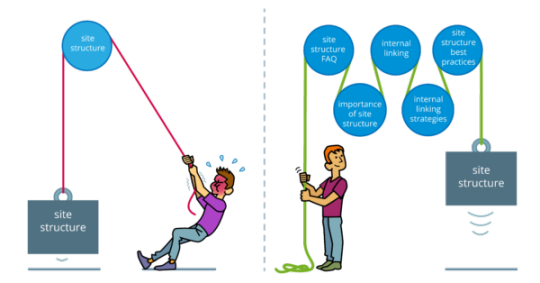
Your internal linking structure is Google’s guide. You should make sure to put an internal link from each of these articles (site structure FAQ, internal linking, and so on) to that most important one – the ultimate guide to site structure. That way, Google will notice all these different blog posts pointing towards one article. That’ll give Google the information it needs to determine which one it should rank highest in the SERPs, in this case – the ultimate guide to site structure.
Also, it’s important to link to the related (and less important) posts from your ultimate guide. That way, your users will be able to navigate your site easily and Google will better understand the relationship between these articles. So make sure to link both ways.
Keep reading: More articles on internal linking »
Need help with your internal linking structure?
Setting up an internal linking structure can be rather hard. Especially if you have a lot of articles on your website. How do you find out which could be candidates to link to the article you want to rank with? Yoast SEO Company premium offers a renewed internal linking feature which helps you set up an awesome internal linking strategy. In this short video, I’ll explain how it works:
youtube
In a nutshell, our tool offers suggestions for internal links to similar articles to the one you’re writing. You’ll find the internal linking suggestions in the Yoast site bar while you’re working on your post. Also, cornerstone articles (those articles you most desperately want to rank with) are shown at the top of the list to make sure you don’t forget to link to them.
Conclusion on wrong page ranking
It can be very annoying when Google ranks the wrong page for a certain keyword. In many cases, this can be fixed by improving your internal linking structure. Make sure that other (less important) posts and pages link towards your most important post. That way, Google will know which post is most important to you and will be more likely to reward that with a higher ranking!
Your internal linking structure, your site structure, is like a guide to Google and therefore really important. Luckily, improving this structure is relatively easy and extremely actionable. So, good luck and start ranking with the right post!
Read on: Keyword research: the ultimate guide »
SEO Company by DBL07.co
source http://www.scpie.org/why-is-google-ranking-the-wrong-page/
source https://scpie.tumblr.com/post/625774052575952896
0 notes
Text
Why is Google ranking the wrong page?
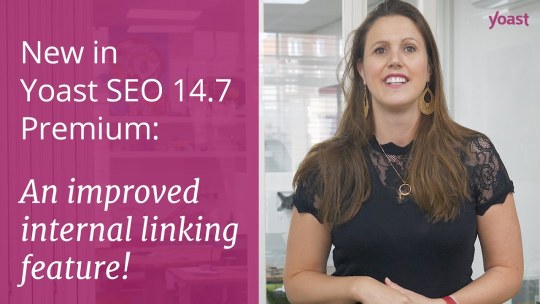

Marieke van de Rakt
Marieke van de Rakt is the founder of Yoast SEO Company Academy and CEO of Yoast. Her favorite SEO Company topics are SEO Company copywriting and site structure.

Your post is optimized, all your bullets in Yoast SEO Company are green and still, the post you want to rank with does not rank for that keyword. And yet, another page on your website does show up in the results. But that’s not the one you wanted to rank highest with. Why is Google ranking the wrong page? What can you do to change this? In this post, I’ll explore possible causes for why this is happening. And more importantly, I’ll help you fix it!
Explanations for wrong page ranking
If the wrong page turns up in the Search Engine Result Pages (SERPs), it means that Google thinks that this page is a better fit than the post you want to rank with. So why does Google think that? The most plausible cause for having the ‘wrong’ page show up in the search results is keyword cannibalization. But before we go into that, I have to mention another reason, which has to do with search intent.
A mismatch in search intent
One reason that the wrong page is showing up in the search results, is a mismatch in search intent. It could well be that you’ve written an informative article about a product that you sell, but you also have a product page for this specific product. This makes perfect sense, as these pages are focused on a different search intent. But if Google isn’t able to recognize the intended search, the wrong page could end up in the SERPs.
Read more: Use the SERPs to create intent-based content »
Keyword cannibalization
In most cases, the wrong page showing up is caused by keyword cannibalization. This means that you have more than one post or page on your site that can rank for the same search query. If you have multiple pages and posts about the same topic, perhaps even optimized for similar keywords, Google will get confused. It won’t know which one of your articles to rank highest and this results in your articles competing with each other for a position in the SERPs. You might think this isn’t such a bad thing, but you’re cannibalizing your own content. Which means that both pages end up with a lower position in the results.
Recognize and fix keyword cannibalization
If you suspect that your site might be suffering from keyword cannibalization, it’s important to research this. Just Google your keyword specifically for your site. I’ll explain how this works by using Yoast.com as an example. By typing in site:yoast.com [specific keyword] on Google, it will give you all the posts and pages it finds and considers on Yoast.com for that specific keyword. If you have many pages competing for that same keyword, you’ll probably be experiencing some keyword cannibalization.
In order to start ranking with the right page in the SERPs, you should solve your keyword cannibalization problem. Although finding and fixing keyword cannibalization requires some serious effort, it will definitely pay off. You already know which page you want to rank with. You know which page is most important to you. Now you just have to make sure that Google knows it too.
Solve wrong page ranking with internal linking
Fixing keyword cannibalization helps you assess similar pages and take action to increase the rankings of the right pages. But that’s not all. In order to solve your problem with the wrong page ranking, you also need to improve your internal linking structure. After all, Google follows links. The way you structure your site, the way you internally link one page to the other, gives Google important clues about which pages are important (and which aren’t). Pages that have a lot of internal links will get more visits from the Google bots. But on pages with little or no internal links the Google bots will come around less often.
Pages that have a lot of internal links pointing towards them are deemed important. While pages with little or no internal links will not appear important (in the eyes of Google). That’s something you can act on! Make sure that the page you want to rank with has the most internal links pointing towards it. That way, you’re showing Google which article is most important with the use of internal linking.
The context of internal links
A great internal linking structure only works if your internal links are in context. They have to make sense. The page you want to rank with should have links from pages that are topically related to that specific page. Adding links from random pages to one of your pages does not work. Google just is too smart for that. And it’s bad user experience for your site users. Your internal linking should make sense so that users want to click on internal links, want to read more or to get more detailed information about a related topic.
Example: creating an internal linking setup
Let’s look at an example of how to set up a great internal linking strategy. Because it makes sense to write multiple articles about topics related to your business. So how do you make sure you’re not cannibalizing your own content? And how do you tell Google which article is the most important one?
Imagine you want to rank with the keyphrase [site structure]. That’s a rather competitive keyphrase. If you’re just starting out in blogging about site structure, it might be hard to rank for that term. A great strategy is to write different articles each focussing on a different aspect of site structure, for example: [site structure FAQ], [internal linking], [site structure best practices]. These search terms are less competitive and these articles will each drive some traffic to your website. However, how do you make sure that Google knows which article is most important?
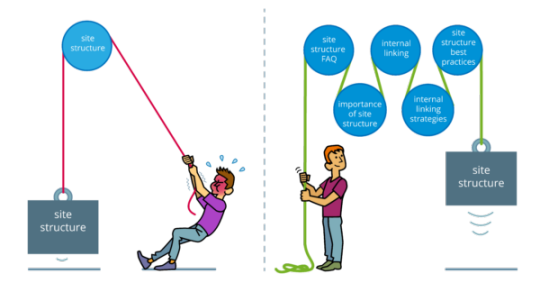
Your internal linking structure is Google’s guide. You should make sure to put an internal link from each of these articles (site structure FAQ, internal linking, and so on) to that most important one – the ultimate guide to site structure. That way, Google will notice all these different blog posts pointing towards one article. That’ll give Google the information it needs to determine which one it should rank highest in the SERPs, in this case – the ultimate guide to site structure.
Also, it’s important to link to the related (and less important) posts from your ultimate guide. That way, your users will be able to navigate your site easily and Google will better understand the relationship between these articles. So make sure to link both ways.
Keep reading: More articles on internal linking »
Need help with your internal linking structure?
Setting up an internal linking structure can be rather hard. Especially if you have a lot of articles on your website. How do you find out which could be candidates to link to the article you want to rank with? Yoast SEO Company premium offers a renewed internal linking feature which helps you set up an awesome internal linking strategy. In this short video, I’ll explain how it works:
youtube
In a nutshell, our tool offers suggestions for internal links to similar articles to the one you’re writing. You’ll find the internal linking suggestions in the Yoast site bar while you’re working on your post. Also, cornerstone articles (those articles you most desperately want to rank with) are shown at the top of the list to make sure you don’t forget to link to them.
Conclusion on wrong page ranking
It can be very annoying when Google ranks the wrong page for a certain keyword. In many cases, this can be fixed by improving your internal linking structure. Make sure that other (less important) posts and pages link towards your most important post. That way, Google will know which post is most important to you and will be more likely to reward that with a higher ranking!
Your internal linking structure, your site structure, is like a guide to Google and therefore really important. Luckily, improving this structure is relatively easy and extremely actionable. So, good luck and start ranking with the right post!
Read on: Keyword research: the ultimate guide »
SEO Company by DBL07.co
source http://www.scpie.org/why-is-google-ranking-the-wrong-page/
0 notes